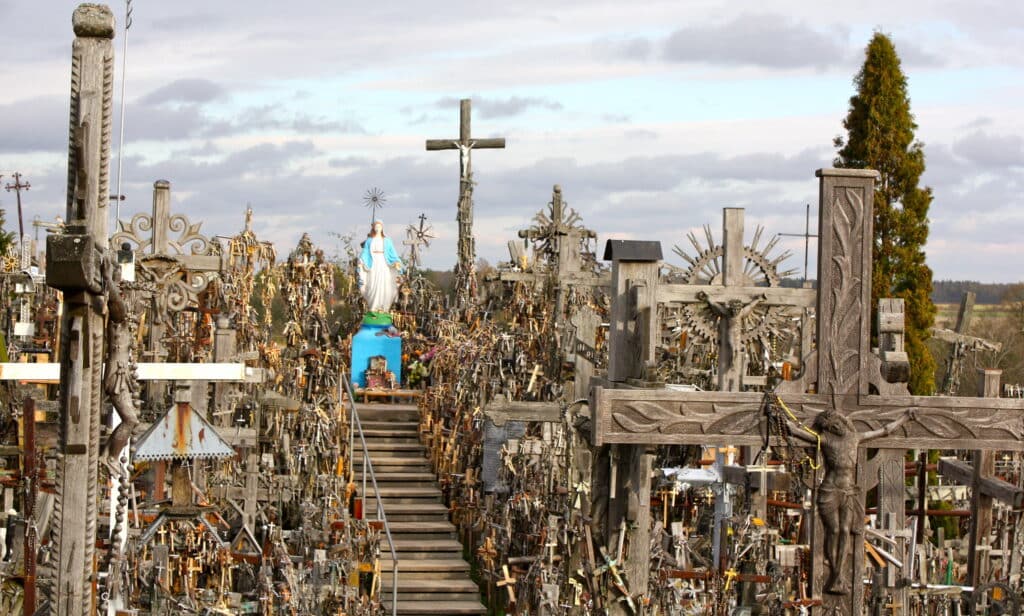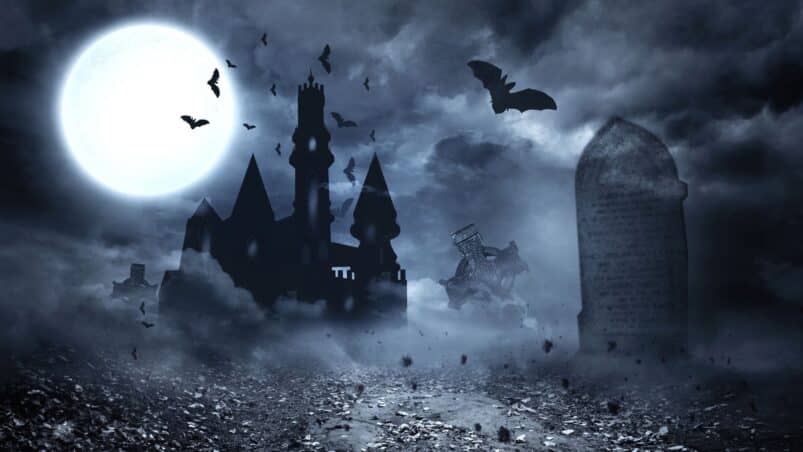Halloween is right around the corner and there is suspense and horror in the air. EHT has compiled a list of heritage-related places you might not know of with a spooky and eerie feel to them. Add some creeps and spine-thrilling adventures to your Halloween weekend or plan your next trip… if you dare of course!
But where does Halloween come from? Today, many Europeans associate Halloween more with a North American holiday, instead of their own history. However, the tradition of Halloween began in Northern Ireland. The origin of Halloween dates back to 2000 years old Celtic festival of Samhain (pronounced as sow-in). The Celts celebrated their new year on November 1.
The end of October marked the end of summer and the harvest season. It also indicated the start of cold, dark winters. The Celts associated this time of the year with death. According to Celtic philosophy on October 31, new years eve, the boundary between the living world and the world of death became blurred. It was believed that the ghosts were allowed to return to Earth that evening.
Halloween was introduced to the rest of Europe and later to the world by the Irish. It has given rise to its own folklore, epic narratives, and chronicles, as well as customs that fuse elements of each distinct civilization with a celebration of the Spirit World.
5 of the spookiest and most haunting places in Europe
Catacombe dei Cappuccini, Italy
The first entry on the list is the catacomb in a Sicilian Capuchin monastery in the city of Palermo, Italy. The monastery houses nearly 8000 corpses. The corpses are pinned to the walls, sitting on benches and shelves, and even lying in open coffins. These are corpses of Capuchin friars, professors, and virgins. The monks mummified them and laid them on shelves to drain all bodily fluids. After a year, the dried-out corpse would be rinsed with vinegar and re-dressed in their best attire. Then they were placed on display for eternity. The oldest corpse in the catacombs belongs to friar Silvestro da Gubbio, who passed in 1599.
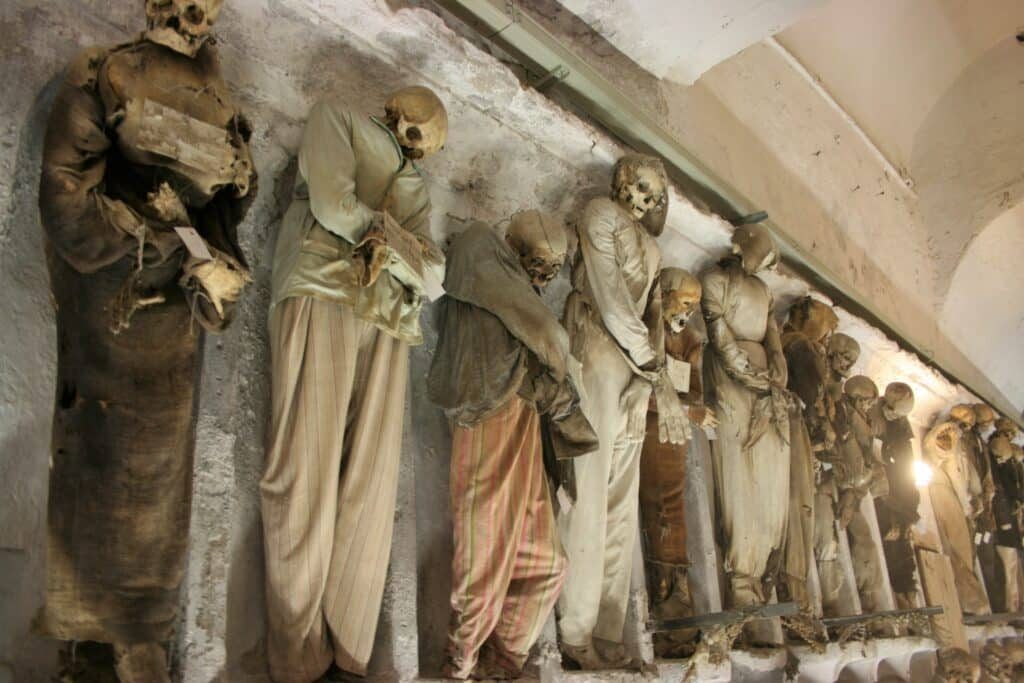
Moosham Castle, Austria
Onward to the medieval castle of Moosham, located in Unternburg, Austria. The building has been at the heart of sinister activities through the ages. It was the administrative centre of the Salzburg witch trials (1675-1690. Numerous women, children and homeless people were imprisoned and tortured in the castle in order to get a confession out of them. After the trials they were often killed. The site became even more spooky in the 1800s, as the castle became a site for werewolf hunts. It was believed that residents of Moosham were attacking deer and cattle by the night. This led to the rounding up and murdering of many in the castle’s dungeon.
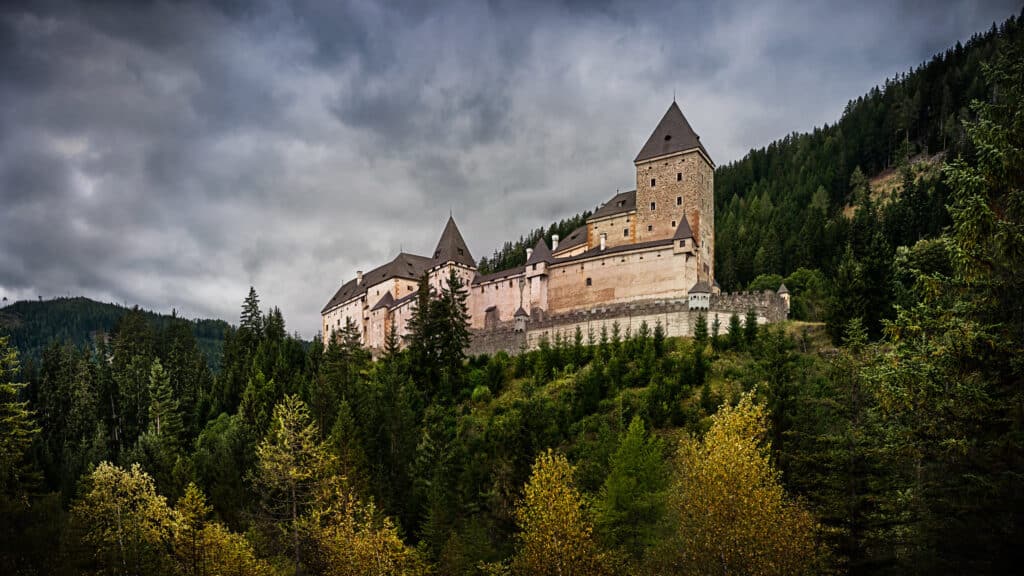
Château de Montségur, France
A site that holds an unknown European history lies in the South of France. The castle of Montségur, named after the nearby hamlet, became a centre of Cathar activities, an unorthodox Christian movement condemned by the church and the king of France. It became the seat of the Cathar church by 1233 and housed hundreds of residents. In response, the French royal forces began the siege of Montségur for nine months until it surrendered. Upon surrender, hundreds of civilians were burned alive, as a Stele below the castle remembers people about their gruesome fate to this day.
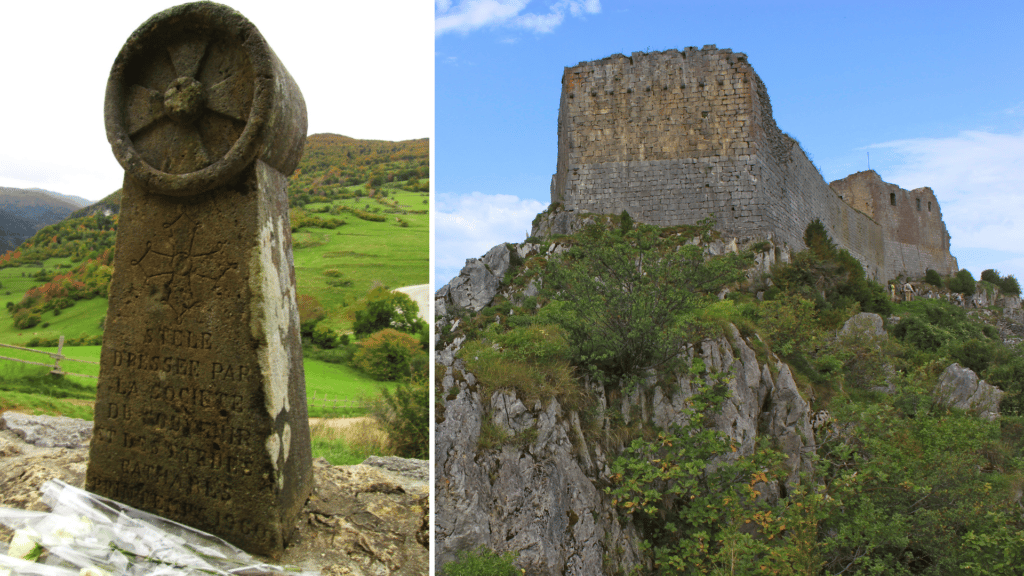
Sedlec Ossuary, Czech Republic
The Czech bone church, also known as Kostnice Ossuary, is located in the suburb of Kutna Hora not far from Prague. In 1278, Henry, the abbot of Sedlec was sent to the Holy land and on his return, he bought back the soil from Golgotha and scattered the soil on the grounds of the ossuary. Thus, the burial ground became considered holy. In 1511, a chapel was constructed on the burial grounds which houses the bones from the exhumed graves. In 1870 František Rint artistically rearranged the bones into furnishings and decorations in the chapel, and it has been a hotspot for tourists ever since. It is estimated that the ossuary contains between 40,000 to 70,000 bones.
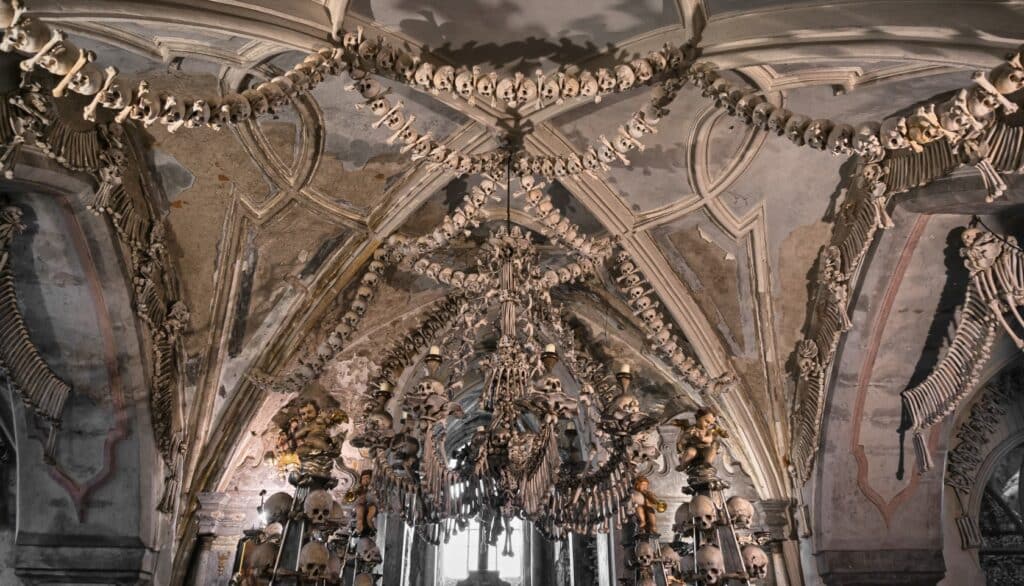
Hill of Crosses, Lithuania
And our last entry is again one of religious nature, the impressive and spooky Kryžių Kalnas, or the Hill of Crosses, in Lithuania. For nearly 200 years thousands of metal and wooden crosses have been placed on a small hill in the town of Šiauliai. The history of the hill begins in the 19th century when the Russian Empire ruled over Lithuania. During the many uprisings against the Russian Tsar, lots of people died and their families started to build crosses to commemorate them. The site is a symbol of hope, faith, and freedom for Lithuanians. Although no dead are buried at the site, numerous ghost sightings and eerie instances have been reported over the years.
